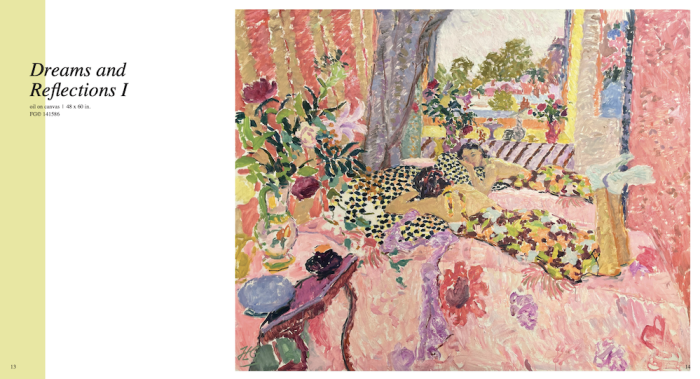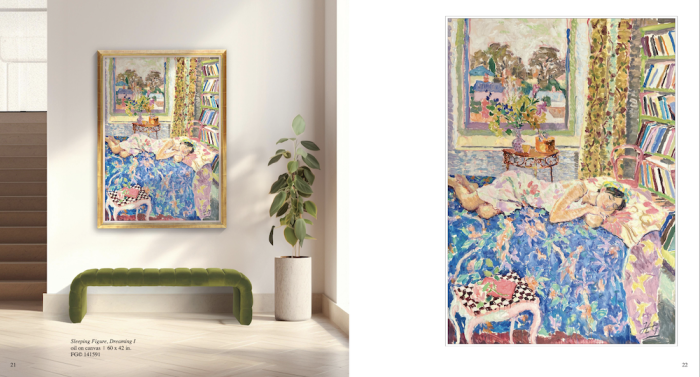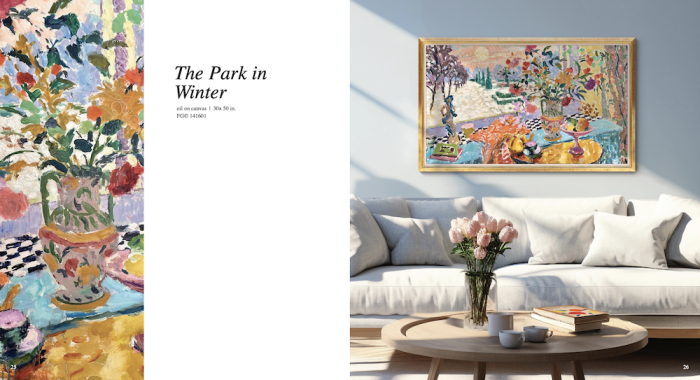Hugo Grenville: New York Exhibition

Findlay Galleries, New York
October 2024
This collection is an exploration of the way in which colour influences our feelings. We live surrounded by colour, in our homes, in the landscape, and perhaps at work too, but seldom do we have time to stop and consider its effect upon us. Why does a room observed in the blue-violet light of a summer dawn suggest a very different atmosphere to the same room lit by the golden light of a summer evening? As humans, we respond to colour from an early age, preferring a red shirt to a green one or a yellow one to a pink one. Colour works like music: it instantaneously chimes with our feelings and moods. Certain combinations evoke pleasure, others distaste. In this group of new paintings, I have used colour as one might use a key in music, as a way of setting the emotional tone of a composition, of communicating something inner through the arrangement of its harmonies.

As with all my work, the paintings seek to convey a spirit of contemplation, reflection and gentle joy found in the world around us, our houses, the streets of our hometowns, and the countryside. I am much moved by looking through windows, and many of the room interiors are designed to lead the viewer’s eye through the careful arrangement of shapes and into the outside world; sometimes, this device has the effect of cloaking the ordinary in a sort of otherworldliness so that the mind can wander freely into the pastures of the imagination. There is a similar effect where a mirror is used to reflect the figure: the interior space presented to the viewer presents an alternative version of reality, a kind of dreamworld, an Alice through the Looking-Glass experience.

The paintings largely fall into two groups: the landscapes composed from the terrace at Old Granary Cottage, my home, and the interiors, some with figures, designed in my studio. Although my vision is rooted in the tradition of English Romanticism, the way in which the paint is deployed is influenced both by a long immersion in European Post-Impressionism and by my more recent fascination with American Post-war painting. In the bigger pictures, the juxtaposition of flat and liquid areas of translucent colour, applied in fluid broad brush marks, with shorter, thicker impasto marks, probably owes more to the technique of de Kooning than it does to Matisse, even if the subject matter remains firmly domestic.

To see the catalogue visit here
A full virtual tour of the exhibition can be seen here
For more information email assistant@hugogrenville.com
Category: News
6.10.2024

